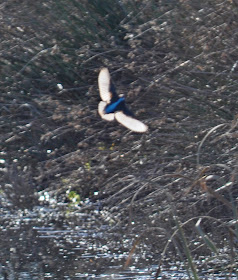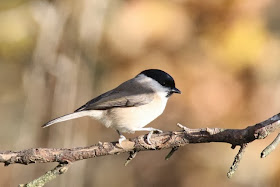 |
| Songthrush |
 |
| Teal Flushing |
 |
| Over two hundred in this pic alone |
 |
| Corvid versus Buzzard |
 |
| Bittern from the screen All pics (c) Bark |
Saturday and Sunday offered a real respite from the run of wet and
turbulent weather that has characterised the past few weeks. Both days were calm
and mostly sunny and bright. There were plenty of birds to be found and some of
them were particularly obliging.
Bittern was seen on both days from the second screen and on Sunday was
feeding along the northern edge of the lagoon quite close to the screen and
looking wonderful in the sunshine.
Two Peregrines were present in the fields to the west of the path to the
second screen and judging by their size are probably males. They make frequent
forays out over Big otmoor causing consternation amongst the Wigeon, other duck
species, Starlings and the Lapwings. A Merlin was seen in Otmoor Lane by two
different birders at least half an hour apart. There are many passerines feeding
in the hedgerows there and perhaps there is less competition there with other
predators.
Duck numbers are now much higher and the southern lagoon is hosting very
large numbers of Teal which we estimated, when they flushed, at at least five
hundred and possibly even more. There were several Pintail and larger numbers of
Shoveler. It was good to see about seven or eight Pochard as they appear to
have been absent for some time. The Whooper Swans are still present and are
keeping company with at least sixteen Mute Swans on the fields to the north of
the reedbed.
At least thirty finches are feeding on the grain by the cattle pens and
there are Greenfinches, Reed buntings and Linnets among the more numerous
Chaffinches. Further along by the hide there are a regular party of
Yellowhammers and on Saturday I saw a Siskin in the same area. From the hide
there are regular Stonechats and several Kingfishers are patrolling the water to
the south of the hide.
One of the Otters was seen briefly from the second screen on Saturday and
it is encouraging to know that they are still around.
I will be writing a summary of the year later and I wish all readers a very
happy new Year and lots of exciting encounters with wildlife in 2014.




























.jpg)
.jpg)
.jpg)
.jpg)
.jpg)
.jpg)











